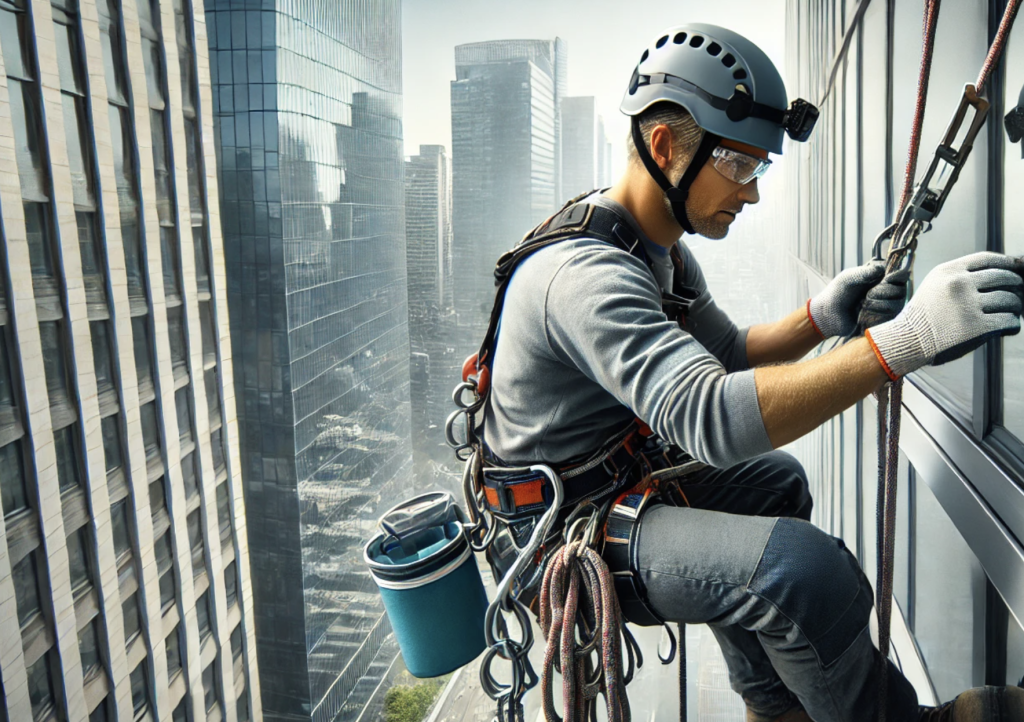Facade Repair: Why Industrial Climbers Are Often Preferable to Traditional Construction Solutions

Facade repair is a crucial part of maintaining buildings in good condition. However, traditional methods such as scaffolding or aerial lifts are not always the best option. In many cases, industrial climbing proves to be a more efficient solution. Let’s explore why high-altitude specialists are often the preferred choice over standard construction methods.
High-Altitude Work: Saving Time and Money on Facade Repairs
One of the main advantages of industrial climbing is the reduced cost and time required for facade repairs. Setting up scaffolding involves significant financial and time investments, as assembly and disassembly can take several days, and rental fees further increase expenses. Aerial lifts also require maintenance costs and may not always be feasible due to space constraints.
Industrial climbers can begin work almost immediately upon arrival at the site. Their equipment requires minimal setup, and the work is completed more quickly since there is no need to move bulky structures. This is especially important for urgent repairs or projects where delays can lead to higher costs.
How Industrial Climbers Ensure Safe Access to Hard-to-Reach Areas
Building facades often feature complex architectural elements such as protrusions, niches, arches, and decorative details. Traditional repair methods can be inconvenient or even impossible for such structures.
Industrial climbers possess specialized skills for working at heights and use advanced safety systems that allow them to reach the most inaccessible parts of a facade. This enables repairs even in areas where scaffolding or aerial lifts would be impractical or unfeasible.
Additionally, unlike heavy construction platforms, rope access systems do not damage facade elements or place additional stress on the building’s structure. This makes industrial climbing not only a convenient but also a safer and more careful approach to repairs.
Flexibility and Efficiency: Advantages of Industrial Climbing in Urban Conditions
Dense urban environments often complicate the use of traditional facade repair methods. Narrow streets, close proximity to other buildings, and pedestrian zones can make installing scaffolding or operating aerial lifts challenging.
Unlike bulky equipment, industrial climbers require very little space to work. They can carry out repairs without blocking sidewalks or roads, which is especially valuable in busy city areas.
Moreover, high-altitude work using rope access does not require extensive permits that are typically needed for erecting scaffolding or using heavy equipment. This speeds up the approval process and allows work to commence sooner.
Industrial Climbing and Minimizing Environmental Impact: Why It Matters in Facade Repairs
One of the main drawbacks of traditional construction methods is their potential negative impact on the surrounding environment and building residents. Scaffolding installation can damage sidewalks and nearby areas, while aerial lifts generate noise and air pollution.
Additionally, using large construction structures increases the risk of falling tools, debris, or even parts of the scaffolding itself, posing a hazard to pedestrians.
Industrial climbers, on the other hand, use minimal equipment, work with precision, and do not create unnecessary disturbances. This is particularly important when repairing facades of residential buildings, office complexes, and historical sites, where preserving architectural integrity and ensuring public safety are top priorities.
Using industrial climbing for facade repairs allows for significant time and cost savings, ensures access to difficult-to-reach areas, overcomes urban space limitations, and minimizes environmental impact. As a result, rope access methods are becoming an increasingly popular alternative to traditional repair techniques, offering efficiency, safety, and convenience for modern building maintenance.
Interesting articles:
How Industrial Climbing Helps Inspect and Repair Bridges and Other Infrastructure
10 Mistakes to Avoid When Ordering Industrial Climbing Services
